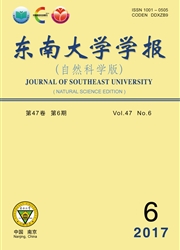

 中文摘要:
中文摘要:
为了研究滑移与体外预应力对钢-混凝土组合简支梁自振频率的影响,提出了适用组合梁自振频率计算的静力折减刚度法和动力刚度修正系数法.以一根跨径为5m的钢-混凝土组合简支试验梁为研究对象,分别采用静力折减刚度法、动力刚度修正系数法及换算截面法计算梁的自振频率,并将计算值与试验实测值进行对比.结果表明,采用动力刚度修正系数法计算得到的体外预应力组合梁的自振频率更接近于实测值,采用静力折减刚度法和换算截面法计算得到的梁的自振频率与实测值之间存在较大误差.当体外预应力值为100kN时,换算截面法和静力折减刚度法与实测值的误差分别为19.3%和7.9%,动力刚度修正系数法误差则仅为2.9%.
 英文摘要:
英文摘要:
To study the influence of the slip and the external prestressed tendons on the natural frequencies of the simply-supported steel-concrete composite beam,the static reduced stiffness method(SRSM)and the dynamic stiffness modified coefficient method(DSMCM)were proposed.Taking a simply-supported steel-concrete composite experimental beam with the span of5m as a research object,the natural frequencies of the beam were calculated by the proposed SRSM,the DSMCM and the transformed section method(TSM),respectively.The calculation results were compared with the dynamic test results.The results show that the natural frequencies of the steel-concrete composite beam with the external prestressed tendons calculated by the proposed DSMCM are closer to the dynamic test results,while those predicted by the SRSM and the TSM exhibit big errors.When the external prestressing is100kN,the errors of the TSM and the SRSM are19.3%and7.9%,respectively,while that of the DSMCM is only2.9%.
 同期刊论文项目
同期刊论文项目
 同项目期刊论文
同项目期刊论文
 期刊信息
期刊信息
